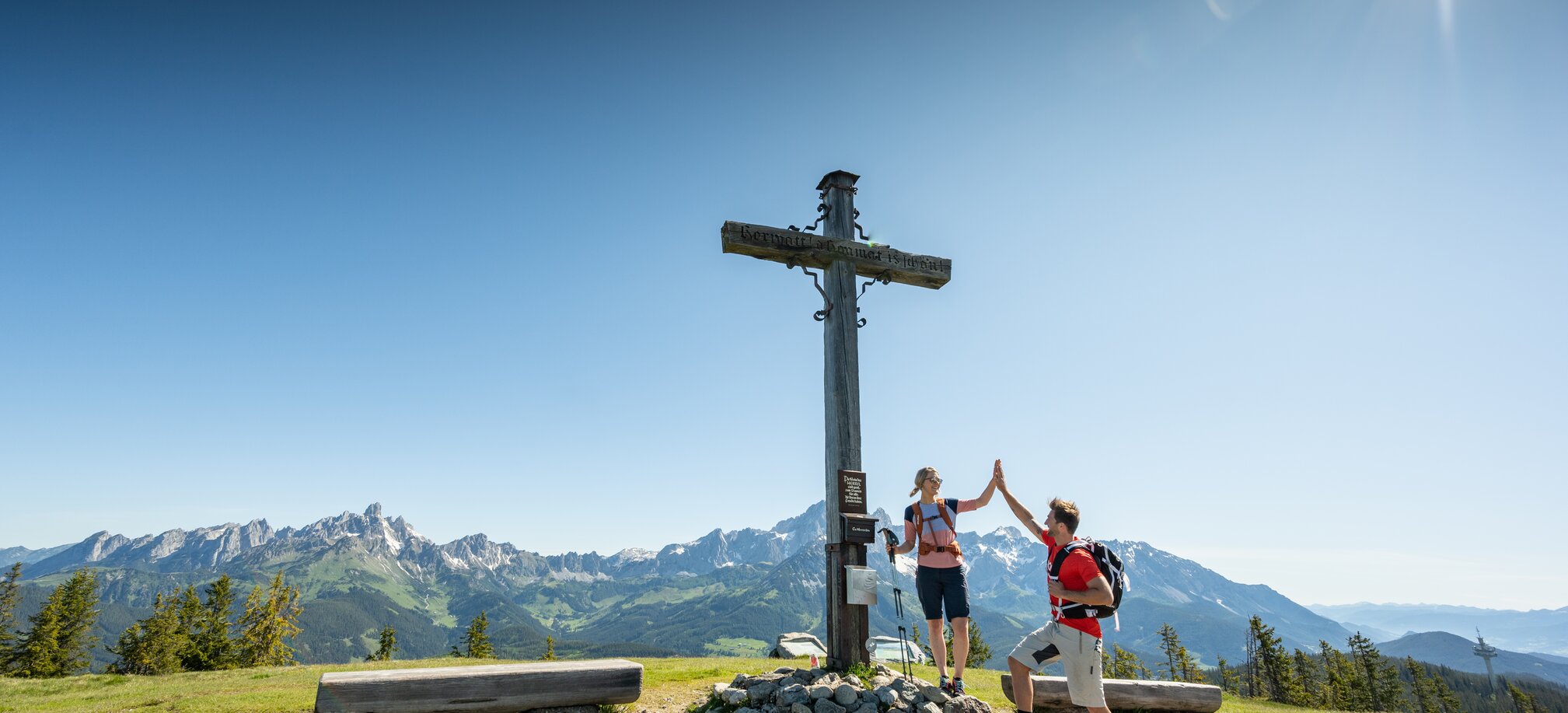Why a packing list for your hiking trip is so important
If you've ever been caught in a rainstorm in the middle of the mountains or felt your stomach growling on a mountaintop because you didn’t bring enough food, you know that good preparation is everything when it comes to hiking. A solid packing list helps you:
- avoid forgetting important items,
- save unnecessary weight,
- be prepared for all weather conditions, and
- increase your safety while on the trail.
That said, your packing list shouldn’t be rigid. It should adapt to the season, the type of tour, your personal preferences and experience. To help you create your own tailored list without getting overwhelmed, here are a few essential tips.
Smart preparation before packing for a hike
Before you start throwing everything you own into your backpack, take a moment to ask yourself these key questions:
- How long will you be hiking at a stretch, and how much clothing will you really need?
- Will you need to stay overnight – and if so, where? A hut, a tent, or a guesthouse?
- Are there places to eat or refill supplies along the way, or do you need to bring everything with you?
- What kind of terrain will you be crossing – steep trails, snowfields, rocky paths?
- How remote is your route?
- What will the weather be like?
Only when these questions are answered can you pack logically. After all, what good is an extra T-shirt if you forgot to bring your hiking boots? It's like planning any other trip: first, you decide whether you're going north or south – then you pack either your snow gear or your swimsuit. 😉
Packing list for day hikes
Once you’re out for more than 1–2 hours without a guaranteed place to restock or eat, a backpack with 15 to 35 liters is ideal. Here’s what you should take along on your day hike:
- Clothing
- Breathable hiking clothes, jacket and rain jacket, spare socks, sturdy hiking boots
- Navigation & Technology
- Compass, hiking map, phone (+ power bank), headlamp, GPS device or hiking app
- Food & Hygiene
- 1–2 liters of water, snacks (granola bars, nuts, etc.) or packed lunch (sandwiches, sausages), cash (some mountain huts accept cash only), trash bag for waste
- Sun Protection & Safety
- Sunscreen, hat or cap, sunglasses, first aid kit, emergency blanket, pocketknife
Packing list for multi-day hikes
If your hiking holiday spans several days, your gear needs to expand too. In this case, go for a 40 to 60-liter backpack.
- Clothing (hiking gear & sturdy boots)
- Extra shirts and underwear, warm layers, rain jacket and rain pants, hat and gloves, lightweight hut shoes
- For cold conditions: Down jacket, Balaclava, Gaiters, Thermal underwear
- Overnight gear
- Sleeping bag or liner, toiletry bag (toothbrush, travel-sized items, etc.)
- Documents & Money
- ID or passport, cash (many mountain huts don’t accept cards)
- Sun Protection
- High SPF sunscreen (ideally SPF 50+), UV-protective shirt, hat or cap, sunglasses
- Special equipment for challenging tours
- Emergency bivy sack, hiking guidebook, binoculars, water purification tablets, cable ties & duct tape for repairs
Of course, packing light is key for multi-day hikes: less is more. Invest in multi-functional gear, quick-drying technical clothing, and lightweight dry bags. Try to keep your total pack weight at or below 7.5 kg, including water.
Additional essentials for your hiking holiday
Beyond the basics, there are a few extras that can really enhance your hiking trip – especially when you're hiking with kids. Consider packing small games or puzzle books for breaks, high-energy snacks, a child carrier for tired legs, or colorful rain ponchos that brighten up even stormy days. Tick repellent, a travel diary, or a compact first aid kit with child-friendly items are also highly recommended.
Always remember: these lists are just suggestions. Your personal packing list will evolve as your experience grows. And one final (and very important) rule: Be prepared for anything – but never pack so much that your backpack limits your freedom to move.
Happy packing and happy hiking! 😊


